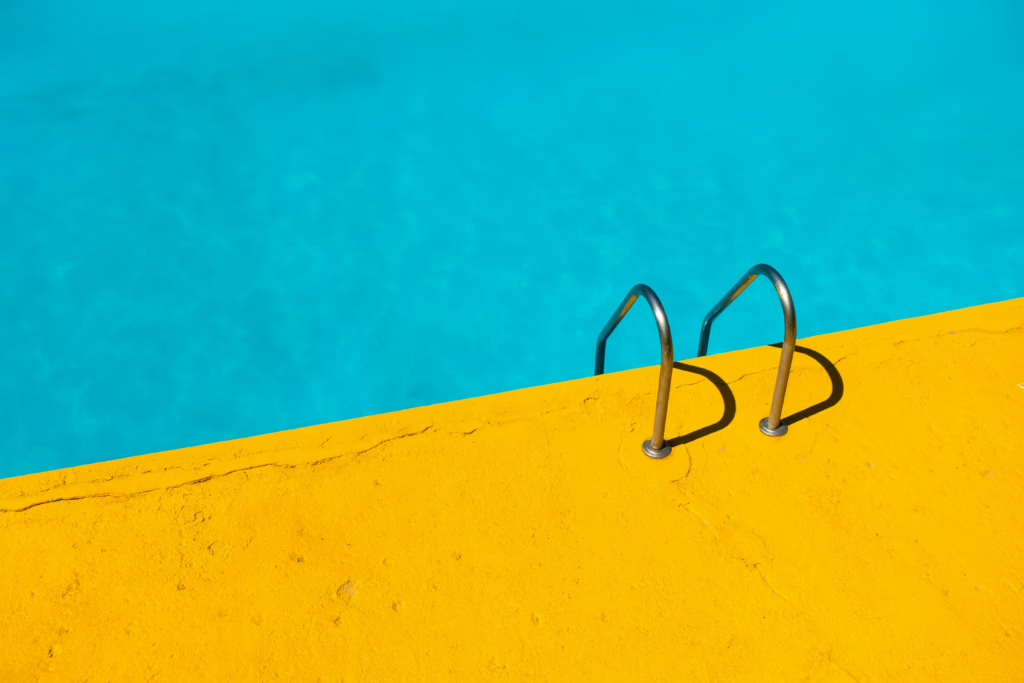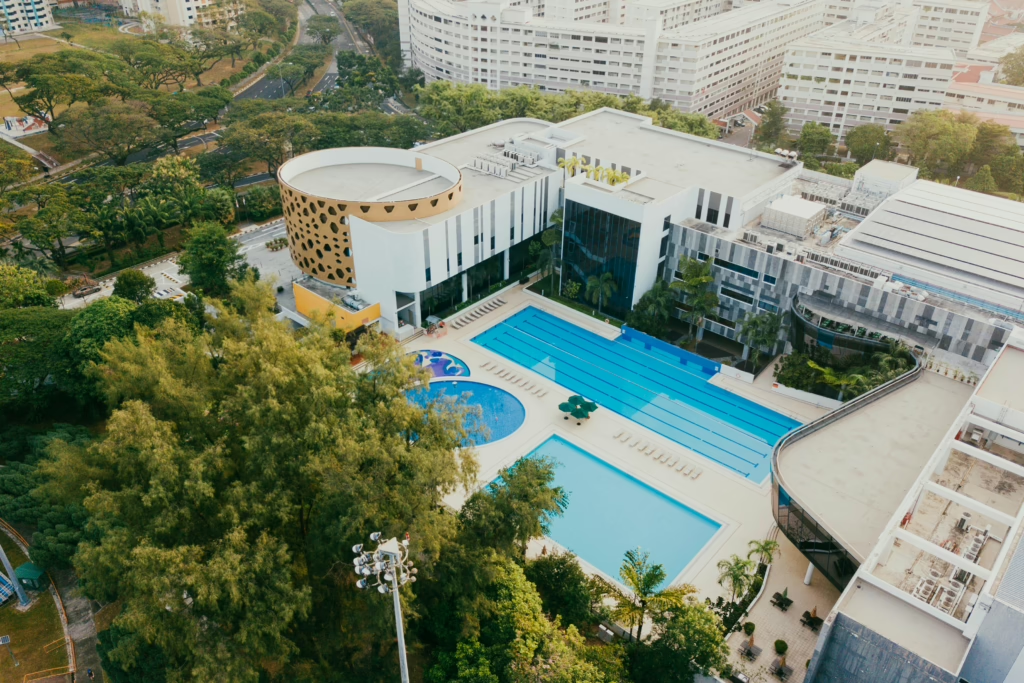A freshly restarted pool means clean water, adequately balanced chemicals, and equipment running at peak performance. But what happens after service is complete? The Best Pool Draining and Restart Service ensures your pool is set up for success, but regular monitoring in the days after is key to keeping everything in perfect condition.
With PoolLogic San Diego, the experts ensure your pool stays clean and runs perfectly even after the restart! Your pool water might need a little tweaking as it settles, and it’s a good idea to check that everything is working just right. By doing a few easy maintenance steps and watching the water level and clarity, you’ll have a fun, worry-free swim every time! Here’s what to look out for after your pool drain and restart service in San Diego!
First 48 Hours: Initial Balancing and Monitoring
After your pool gets a fresh start, the next 48 hours (2 days) are super important to keep it safe and sparkling! The water needs time to settle, and a few little tweaks will help it stay nice and clear. That’s why experts make sure the chemicals are balanced and all your pool equipment is working perfectly!
Chemical Stabilization
Right after your pool is refilled, the chemicals need a little time to mix properly. Professionals will test and adjust things like the pH level, chlorine, and alkalinity to make sure the water is safe and won’t irritate your skin or eyes for a comfortable swim.
Equipment Performance Assessment
Your pool’s pump, filter, and other equipment work hard to keep the water fresh and clean. Pool pros will check that everything is running smoothly so your pool stays in perfect shape for fun all season long!
The First Week: Settling-In Period
After your pool’s big restart, the first week is like a settling-in time, during which the water and equipment get used to their new routine. Let’s take a look at what happens during this important time!
Water Clarity Evolution
In the first few days after the restart, your pool water might look a bit cloudy or murky, but that is nothing to worry about—it’s totally normal! This happens while the chemicals get balanced and tiny particles are filtered out. By checking the pH and chlorine levels and keeping the pool pump running, the water will start to clear up, and soon you’ll have a refreshing, comfortable swim!
Surface and Equipment Adjustments
Your pool’s walls, floor, and equipment are also getting used to their new routine. Brushing the pool walls and floor once a day is an essential regular maintenance task to stop algae from growing and keeps everything nice and smooth. Don’t forget to check the pool’s filter and clean it if needed to ensure everything works great!
Weeks 2-4: Establishing Maintenance Routines
Within 2 to 4 weeks, your pool is finally settling into its fresh start, and it’s all about keeping things running smoothly from there. Regular maintenance, like checking chemicals and cleaning the filter, really helps keep the water clear and safe for swimming. It’s the perfect time to get your pool into a good routine for a fun and refreshing swim!
Chemical Maintenance Schedule
During these weeks, you’ll need to check the pool’s chemicals regularly, such as the pH and chlorine levels, to make sure they’re just right. This helps keep the water clean, clear, and safe for swimming. Regular water testing will ensure the balance is perfect so your pool is always ready for fun!
Filtration System Performance
Your pool filter is working hard to keep the water clean. Check to make sure it’s running smoothly and clean it if necessary. Keeping the filter in good shape helps prevent debris from building up and keeps the water sparkling clean!
Common Post-Restart Challenges and Solutions
After restarting your pool, it’s very common to encounter a few challenges as the water and equipment are still adjusting. Understanding these common issues and knowing how to address them can help keep your pool clean, safe, and enjoyable for everyone to swim in.
Water Balance Fluctuations
In the first few days after a pool restart, the water’s chemical balance might shift, leading to cloudy water or skin irritation. Regularly testing and adjusting the pH and chlorine levels helps maintain clarity and swimmer comfort. If the traditional methods don’t restore clarity, consider a reverse osmosis treatment to remove impurities efficiently.
Algae Reappearance
Stubborn algae can quickly return if the water’s chemical balance isn’t properly maintained. Regularly checking chemical levels and ensuring the filtration system operates correctly are key preventive measures. If algae do appear again, specialized treatments targeting specific types like mustard, yellow, black, or green algae can effectively address the issue.
Equipment Hiccups
Your newly restarted pool may experience equipment issues such as pump malfunctions or filter inefficiencies. Regularly inspecting and maintaining equipment ensures its optimal performance. If problems arise, consulting with professionals can help identify and resolve issues promptly, preventing further complications.
Key Takeaway
By staying vigilant and proactive, you can address these common post-restart challenges, ensuring your pool remains a safe and enjoyable place for everyone.
Maximize Your Restart Investment
Maximizing the benefits of your pool restart involves two key elements: regular professional maintenance and attentive care as an owner. These practices ensure your pool remains a safe, clean, and enjoyable place for everyone to swim in.
Regular Professional Maintenance
Having professionals like PoolLogic San Diego take care of your pool helps keep it in excellent shape. They can spot any problems early, so your pool’s equipment works well and the water stays just right. Regular check-ups also help your pool last longer, saving money on big repairs later on.
Owner Vigilance
As a pool owner, it’s very important to stay on top of your daily and weekly pool maintenance tasks. Checking the water’s chemicals, cleaning the filter, and skimming out leaves keeps the pool healthy. Taking care of these things in a routine manner helps stop problems like algae or broken equipment. Just remember, being consistent helps keep the pool safe and fun for everyone!
Key Takeaway
By working with pool professionals and staying on top of your own scheduled pool care, you can definitely get the most out of your investment and keep your pool a fun and safe place for everyone to enjoy for years to come.
Frequently Asked Questions
How often should I have my pool drains professionally cleaned?
It’s a good idea to have your pool drains professionally cleaned about once every 6 to 12 months, depending on pool usage and environmental factors.
What are the most common signs that my pool drain needs cleaning?
Look out for slow drainage, debris collecting in certain areas of the pool, strange noises from the pump, or cloudy water despite proper chemical balance.
Is professional drain cleaning necessary if I regularly skim and vacuum my pool?
Yes, regular skimming and vacuuming help, but a professional cleaning ensures the pipes and internal system are free of buildup that skimming can’t reach.
What’s the typical cost for professional pool drain cleaning in San Diego?
The cost can vary, but generally, it ranges from $150 to $300 depending on the size of your pool, the complexity of the cleaning needed, and the accessibility of your pool will also affect the cost of the pool cleaning.
Do I need to drain my pool for professional drain cleaning?
No, professional drain cleaning can often be done without draining the pool, so you don’t need to worry about losing all that water.
How long does professional drain cleaning typically take?
Most professional drain cleaning services take between 1 and 2 hours to complete, depending on the size of the pool and the condition of the drains.
Can clogged drains damage my pool equipment?
Yes, clogged drains can strain your pool pump and filtration system, possibly leading to expensive repairs if not addressed in time.
What causes pool drains to clog most frequently?
Common culprits include leaves, hair, sunscreen, body oils, and small debris that get stuck in the drain lines.
Are there any steps I can take between professional cleanings to maintain my drains?
To help prevent clogs, you need to regularly skim the surface, rinse off before swimming, and make sure the filter is clean and functioning well.
How can I tell if my pool drain is working properly?
If the water drains slowly, or if you notice unusual noises from your pump, it could be a sign that the drain is clogged or not functioning properly. Regular testing can help you stay on top of any issues.
Final Thoughts
After your San Diego pool restart, it’s all about making sure your pool stays in top shape for as long as possible. With PoolLogic San Diego, you’ll get the best pool drain and restart Service and, with our 5-minute setup process, you can be sure everything is ready to go for you and your family. With a little attention and regular monitoring, your pool will remain clean, clear, and ready for fun all season long!
So, why not take the time now to make sure your pool is in the best condition possible? Don’t let small issues turn into big ones—stay proactive and keep your pool in excellent shape for a hassle-free swimming experience! Contact us today, and your future self will thank you for it!



